The Ultimate Chimney Cap Fit Guide: Expert Measuring Techniques for Homeowners
Finding the perfect chimney cap starts with accurate measurements. This comprehensive chimney cap fit guide provides professional techniques used by chimney experts to ensure your cap fits perfectly every time. Whether you have a single flue, multi-flue, or metal chimney, our step-by-step chimney cap fit guide will help you measure like a pro.
A properly fitted chimney cap is your first line of defense against water damage, animal intrusion, and debris accumulation. Without accurate measurements from our chimney cap fit guide, you risk purchasing the wrong size, leading to installation problems and inadequate protection.
Introduction: Understanding the Importance of Accurate Measurements for Chimney Caps
Selecting the right chimney cap is essential for the protection and efficiency of your chimney. A well-fitted cap prevents debris, animals, and water from entering the chimney, which can lead to blockages or damage. Precise measurement is key to ensuring the cap you choose fits perfectly, providing optimal protection. In this guide, we’ll walk you through the steps of measuring your chimney for a cap. Remember, if you’re unsure at any point, don’t hesitate to contact us with photos of your chimney and its measurements – we’re here to assist!
Tools Required: Essential Items for Chimney Measurement
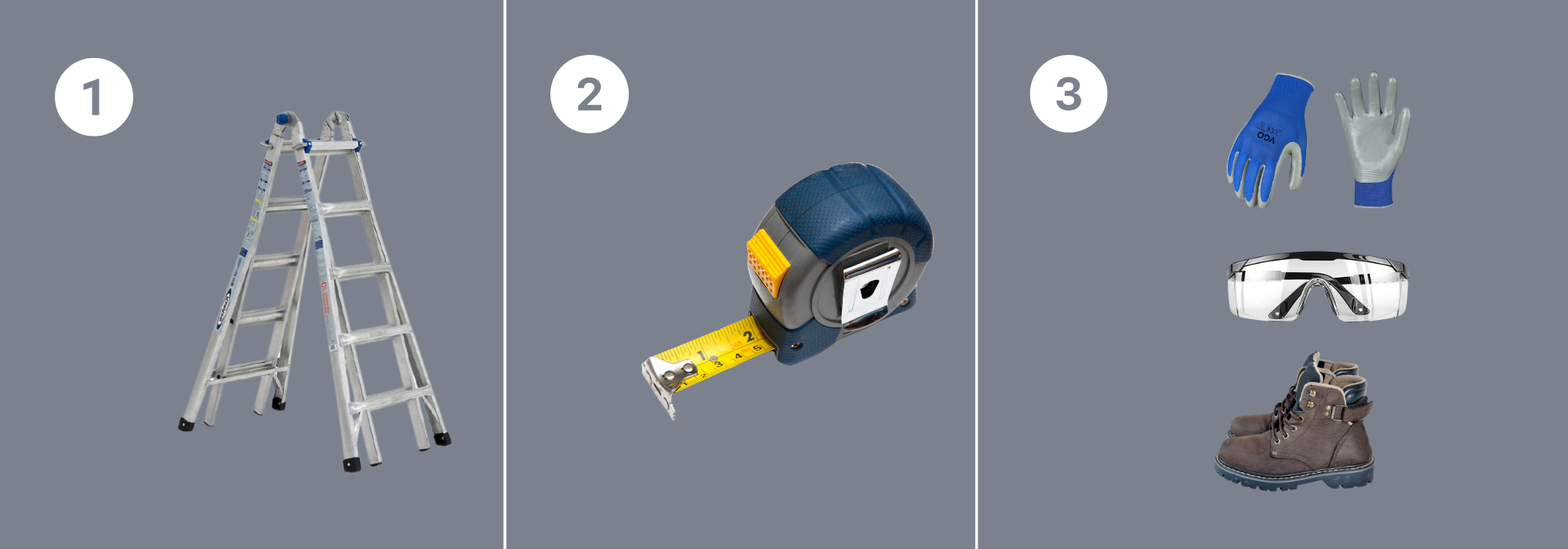
Before you start measuring, it’s important to gather the right tools. The process is straightforward but requires precision and safety precautions. Here’s what you’ll need:
- A Sturdy Ladder: Ensure it’s suitable for your house’s height and provides stable access to your chimney.
- Tape Measure: A reliable measuring tool for accurate dimensions.
- Safety Gear: This includes non-slip gloves, protective eyewear, and sturdy footwear.
If climbing heights isn’t your forte, we recommend hiring a professional to take these measurements. It’s crucial to prioritize safety over all else.
Safety First: Prioritizing Your Well-being
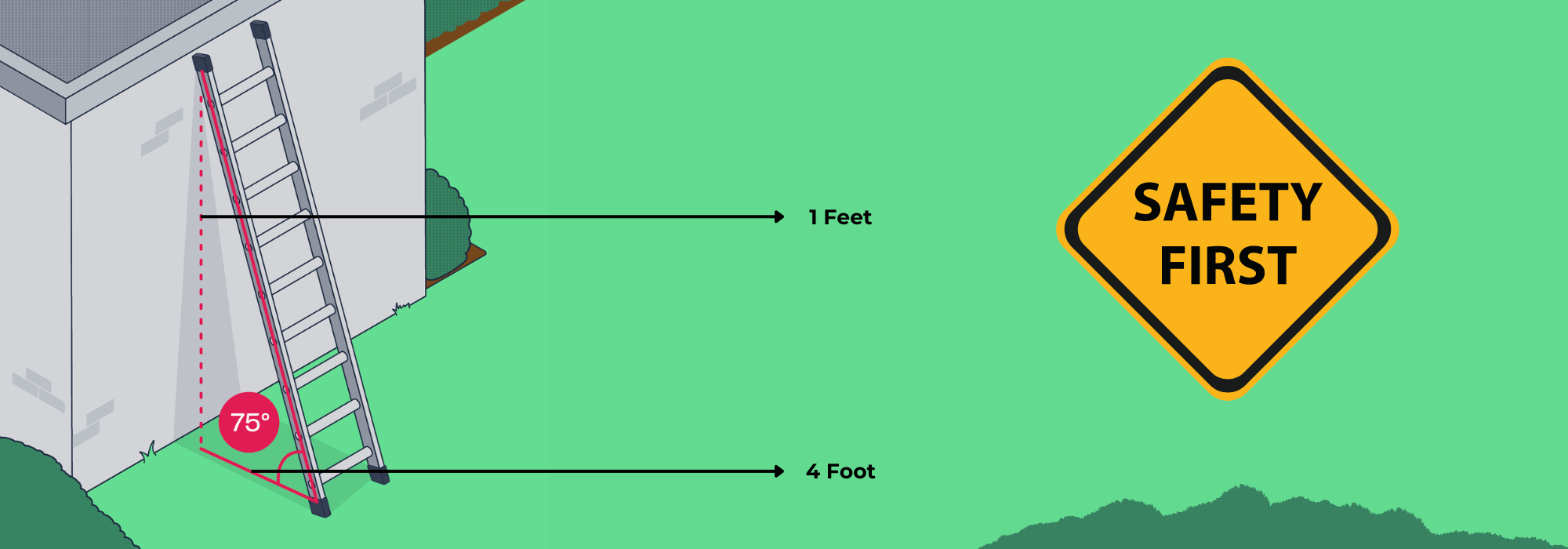
Safety cannot be overstressed when measuring your chimney. Always ensure that your ladder is placed on stable, level ground, avoiding precarious surfaces like wooden decks. Follow the 4-to-1 rule for ladder placement: for every four feet of ladder height, the base should be one foot away from the wall. It’s always wise to have a partner with you to hold the ladder and assist as needed.
Measuring Different Chimney Types
How to measure for single flue chimney:
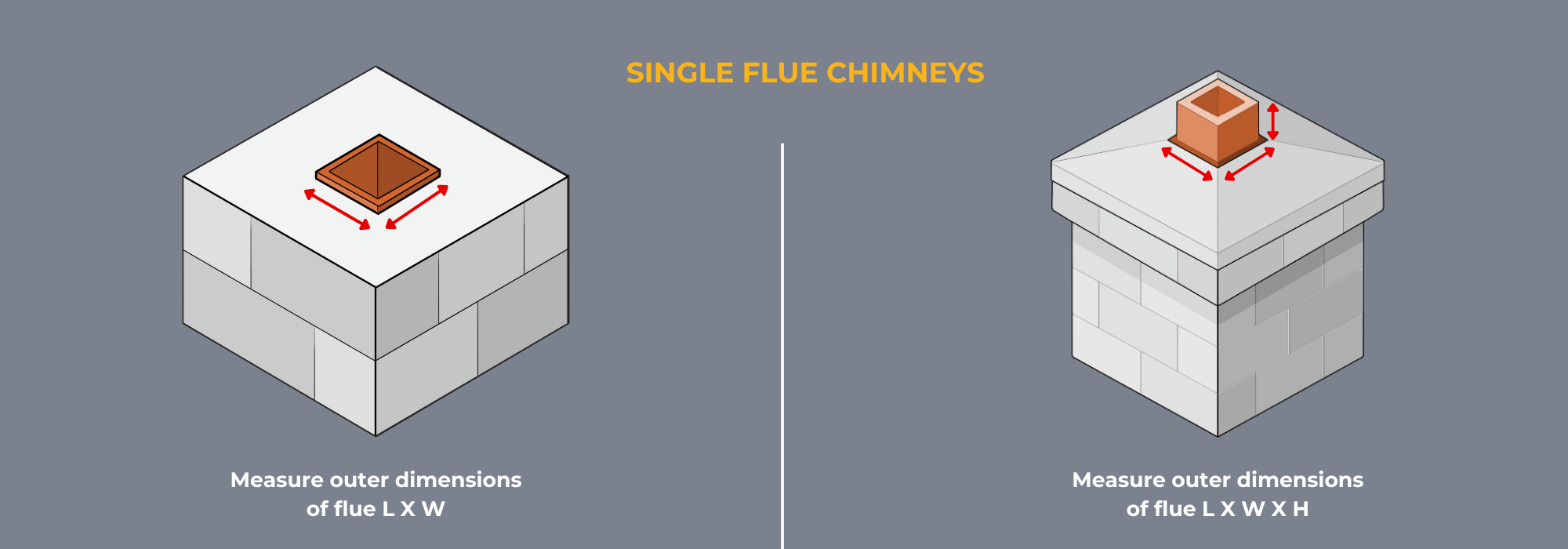
Measure both the length and width of the outside of the flue. If the flue protrudes above the chimney crown, include the height in your measurement.
How to measure for multi flue chimney:
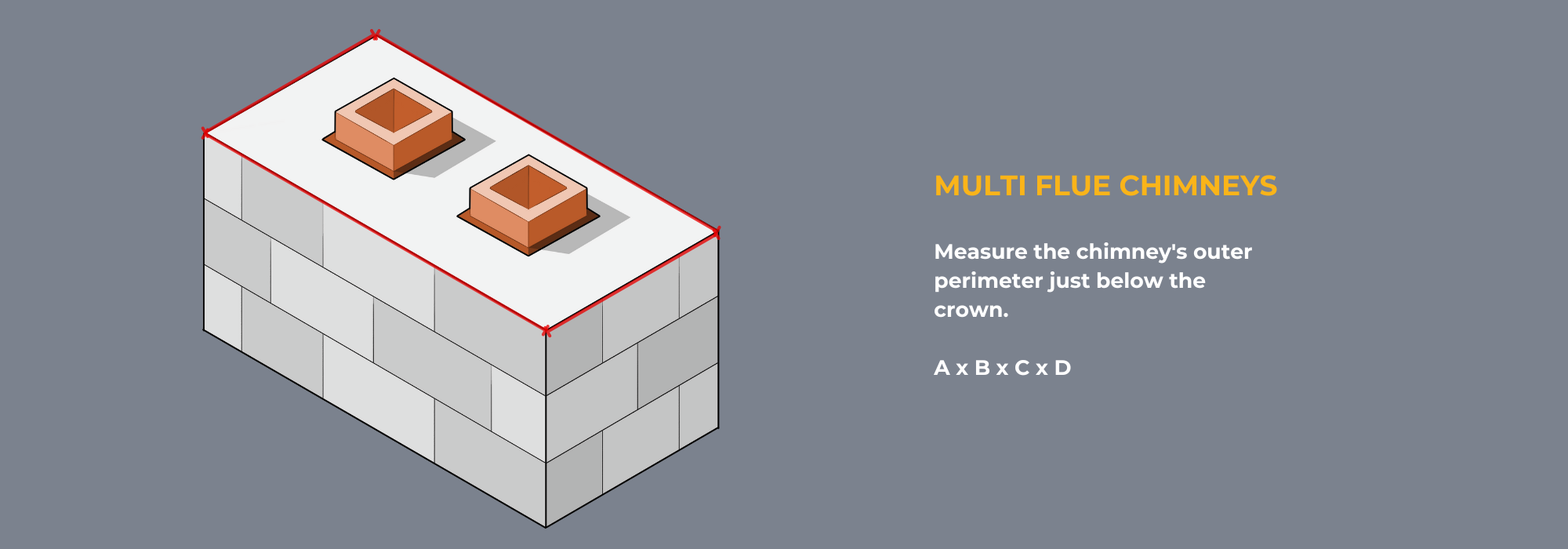
Measure the total outer dimensions of the chimney at the row of bricks just below the chimney crown. Ensure all four sides are measured for accuracy. Including a photo with your measurements helps us understand your specific needs.
How to measure for Metal chimneys:
For non-air-cooled chimneys, measure only the inner diameter.
For air-cooled chimneys, again measure the inner diameter, avoiding the outer rings. The cap is designed to fit snugly inside this inner pipe.
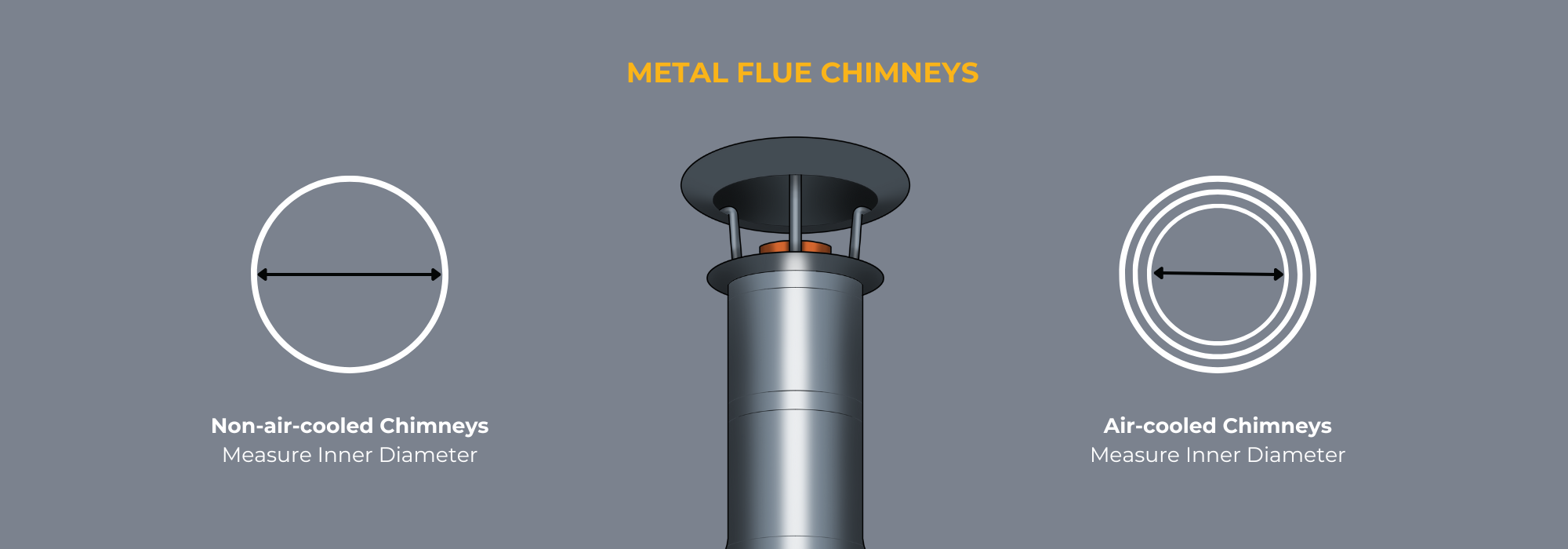
Tips and Common Mistakes
- Always double-check your measurements for accuracy.
- Avoid measuring only the visible part of the flue; ensure you measure the entire structure, including any parts that may extend beyond the chimney crown.
- Consider any obstructions like chimney braces or decorations that might affect the fit of the cap.
Complete Chimney Cap Fit Guide: How to Measure Your Chimney for the Perfect Cap
Getting the right chimney cap fit is crucial for protecting your home from water damage, animals, and debris. This comprehensive chimney cap fit guide will walk you through everything you need to know about measuring your chimney accurately and selecting the perfect cap for your specific needs.
Why Proper Chimney Cap Fit Matters for Your Home
A properly fitted chimney cap serves as your chimney's first line of defense against the elements. When you achieve the correct chimney cap fit, you're protecting your investment and ensuring optimal chimney performance. Poor fitting caps can lead to water infiltration, pest intrusion, and reduced chimney efficiency.
The Consequences of Incorrect Chimney Cap Fit
Understanding why chimney cap fit is so important helps emphasize the value of accurate measurement. An improperly fitted cap can cause:
- Water damage to your chimney structure and interior walls
- Animal and bird nests blocking your flue
- Debris accumulation affecting ventilation
- Increased maintenance costs over time
- Potential safety hazards from blocked airflow
Essential Tools for Measuring Chimney Cap Fit
Before beginning your chimney cap fit measurement process, gather these essential tools to ensure accuracy and safety:
Primary Measurement Tools
- Heavy-duty tape measure (at least 25 feet long)
- Digital calipers for precise measurements
- Notepad and pencil for recording dimensions
- Camera or smartphone for reference photos
Safety Equipment for Chimney Access
- Sturdy extension ladder rated for your weight plus tools
- Non-slip safety shoes with good traction
- Work gloves for better grip
- Safety harness (recommended for steep roofs)
- Spotter or assistant to hold the ladder
Professional tip: If you're uncomfortable with heights or lack proper safety equipment, contact a professional for chimney cap fit assessment. Your safety is worth more than any potential savings.
Step-by-Step Chimney Cap Fit Measurement Guide
Single Flue Chimney Cap Fit Measurement
Single flue chimneys are the most common type found in residential homes. Follow these steps for accurate chimney cap fit measurement:
Measuring the Flue Opening
- Locate the flue opening at the top of your chimney
- Measure the interior dimensions of the flue opening
- Record both length and width in inches
- Check for any irregularities in the opening shape
- Measure the height if the flue extends above the crown
Accounting for Flue Extensions
Some flues extend several inches above the chimney crown, which affects chimney cap fit requirements. Measure from the crown surface to the top of the flue extension to ensure proper cap selection.
Multi-Flue Chimney Cap Fit Considerations
Multi-flue chimneys require different measurement approaches for optimal chimney cap fit:
Overall Chimney Dimensions
- Measure the total outer perimeter of the chimney structure
- Include all flue openings in your measurement plan
- Account for spacing between flues when selecting caps
- Consider the crown design and how it affects installation
Individual Flue Measurements
For multi-flue systems, you may choose individual caps for each flue or a single large cap covering the entire chimney top. Each approach has different chimney cap fit requirements.
Metal Chimney Cap Fit Specifications
Metal chimneys, including prefabricated and factory-built systems, have specific chimney cap fit requirements:
Standard Metal Chimney Measurements
- Measure the inner diameter of the chimney pipe
- Ignore outer insulation or air gaps in double-wall systems
- Check manufacturer specifications for recommended cap types
- Verify the pipe material (stainless steel, galvanized, etc.)
Advanced Chimney Cap Fit Techniques
Dealing with Irregular Chimney Shapes
Not all chimneys are perfectly rectangular or round. For optimal chimney cap fit on irregular shapes:
- Create a template using cardboard or paper
- Measure multiple points along irregular edges
- Document the largest dimensions for cap sizing
- Consider custom fabrication for extremely unusual shapes
Accounting for Wind and Weather Conditions
Your location's weather patterns affect chimney cap fit requirements:
- High wind areas may need additional securing mechanisms
- Heavy snow regions require reinforced cap construction
- Coastal environments need corrosion-resistant materials
- Desert climates may require UV-resistant components
Common Chimney Cap Fit Mistakes to Avoid
Measurement Errors That Affect Chimney Cap Fit
Many homeowners make these common mistakes when measuring for chimney cap fit:
Under-measuring the Opening
- Taking measurements from inside instead of accounting for installation clearance
- Forgetting to measure diagonal dimensions on square openings
- Not accounting for mortar joint variations in masonry chimneys
Over-measuring Complications
- Adding too much clearance can result in loose-fitting caps
- Measuring damaged or deteriorated areas instead of the actual functional opening
- Including decorative elements that don't affect the functional fit
Installation Considerations for Chimney Cap Fit
Proper chimney cap fit isn't just about measurements—installation factors matter too:
Securing Methods
- Clamps and brackets require specific clearance measurements
- Adhesive installation needs clean, flat surfaces
- Screw-mount systems require access to solid mounting points
Selecting the Right Chimney Cap for Your Fit Requirements
Material Considerations for Different Chimney Cap Fit Scenarios
The material you choose affects both durability and chimney cap fit requirements:
Stainless Steel Caps
- Precise manufacturing tolerances ensure consistent fit
- Corrosion resistance maintains fit over time
- Professional appearance complements most home styles
Copper Chimney Caps
- Premium material with excellent longevity
- Custom fabrication options for challenging fit requirements
- Natural patina development adds character over time
Specialty Caps for Unique Chimney Cap Fit Challenges
Some chimneys require specialized solutions:
Draft-Increasing Caps
These caps improve chimney performance while maintaining proper fit:
- Vacuum effect design enhances draft
- Wind-directional features optimize performance
- Size considerations for adequate airflow
Multi-Flue Caps
Large caps covering multiple flues require careful chimney cap fit planning:
- Structural support requirements for larger spans
- Individual flue accessibility for maintenance
- Proper ventilation for all covered flues
Professional vs. DIY Chimney Cap Fit Assessment
When to Call Professionals for Chimney Cap Fit
Consider professional assessment for chimney cap fit in these situations:
- Complex multi-flue systems with unusual configurations
- Damaged or deteriorated chimneys requiring repair before cap installation
- High or steep roof access presenting safety concerns
- Custom cap requirements needing professional fabrication
DIY Chimney Cap Fit Success Tips
For homeowners tackling their own chimney cap fit project:
Planning Phase
- Research your chimney type thoroughly before measuring
- Order caps with return policies in case of fit issues
- Have backup installation dates in case of weather delays
Execution Best Practices
- Measure twice, order once to avoid costly mistakes
- Take multiple photos from different angles for reference
- Document all measurements clearly for future reference
Maintaining Proper Chimney Cap Fit Over Time
Seasonal Inspection Guidelines
Regular inspection ensures continued proper chimney cap fit:
Spring Inspections
- Check for winter damage from ice and snow
- Verify secure mounting after freeze-thaw cycles
- Clean debris accumulation that might affect fit
Fall Preparations
- Inspect before heating season begins
- Address any loose connections before heavy use
- Document any changes in fit or condition
Signs Your Chimney Cap Fit Needs Attention
Watch for these indicators of chimney cap fit problems:
- Visible gaps around the cap perimeter
- Water stains inside the fireplace or on walls
- Animal activity evidence around the chimney
- Rust or corrosion at connection points
- Loose or rattling sounds during windy conditions
Troubleshooting Chimney Cap Fit Issues
Common Fit Problems and Solutions
Cap Too Large
If your chimney cap is slightly oversized:
- Add weather stripping to fill minor gaps
- Install additional brackets for secure mounting
- Consider professional modification for significant oversizing
Cap Too Small
When caps are undersized:
- Verify measurements before ordering replacement
- Check for chimney deterioration that might have changed dimensions
- Consider professional assessment for complex situations
Emergency Chimney Cap Fit Solutions
For urgent chimney cap fit issues:
Temporary Weather Protection
- Install emergency covering during storms
- Secure loose caps with additional fasteners
- Document problems for permanent repair planning
Expert Resources for Chimney Cap Fit Assistance
Professional Consultation Services
When you need expert help with chimney cap fit:
- Certified chimney professionals can provide accurate assessments
- Local fireplace dealers often offer measurement services
- Custom fabrication shops can create unique solutions
- Home improvement contractors may provide installation services
Manufacturer Support Resources
Many chimney cap manufacturers offer:
- Technical support for measurement questions
- Installation guides specific to their products
- Custom sizing services for unusual applications
- Warranty support for fit-related issues
For additional product information, visit Chimney Safety Institute of America or consult with certified professionals for expert guidance.
Conclusion: Achieving Perfect Chimney Cap Fit
Proper chimney cap fit is essential for protecting your home and ensuring optimal chimney performance. By following this comprehensive guide, you'll have the knowledge and confidence to measure accurately and select the right cap for your specific needs. Remember that investing time in proper measurement and selection pays dividends in long-term protection and performance.
Whether you choose to tackle the project yourself or work with professionals, understanding chimney cap fit requirements ensures you make informed decisions that protect your investment. Don't hesitate to seek professional help when safety or complexity concerns arise—the peace of mind is worth the investment.
For additional assistance with your chimney cap fit project, contact experienced professionals through the National Fireplace Institute or visit manufacturer websites for product-specific guidance. We're here to help ensure your chimney protection meets the highest standards of quality and performance.

 We Ship Anywhere USA & Canada
We Ship Anywhere USA & Canada

